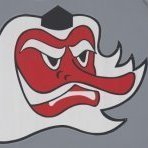
Mark B.
LSP_Members-
Posts
237 -
Joined
-
Last visited
About Mark B.
- Birthday 05/18/1961
Contact Methods
-
Website URL
http://
Recent Profile Visitors
1,576 profile views
-
 Mark B. reacted to a post in a topic:
Looks like Eduard is reassessing 1/32
Mark B. reacted to a post in a topic:
Looks like Eduard is reassessing 1/32
-
Hi Mike, It's a little of both. My build preference for Aircraft is usually depicting them armed and fueled for a mission and just waiting the crew to arrive. This leads to a "simpler build". Then my father's frugality rears it's head and I can't see spending $120+ US on a kit that I will only use half the parts.... I'd have to really have a special bond to an airframe (the kind I have with the F-4 Phantom II) to justify buying a kit and putting a large portion of it in the spares box.... Happy modeling Mark B.
-
 MikeC reacted to a post in a topic:
Most Wanted Poll / Wish List 2022 (and beyond)
MikeC reacted to a post in a topic:
Most Wanted Poll / Wish List 2022 (and beyond)
-
 MikeC reacted to a post in a topic:
Reflections...and a question?
MikeC reacted to a post in a topic:
Reflections...and a question?
-
Put this in the wrong forum, but here it is anyway. To the best of my knowledge (and that is a limited quantity) this has never been kitted in 1/32 scale. It is small so the parts count should be low. I think the only weapon that would have to be in the kit would be the Aden cannon pod. Most everything else it is cleared to carry could be sourced from aftermarket produces or through horse trading on the traders board.
-
Oops This was supposed to go in the "What jet do you want 3d Printed" thread on the LSP Discussion Forum. My bad. Sorry for the thread incursion. Seeing that was a BAE setup at an air expo, I had my suspicions that all of that was probably not actually cleared. However, Wikipedia does show that it carries a number of what could be considered "sophisticated" weapons so I'm thinking if a customer wants a particular piece of hardware, BAE would probably work out a solution. But either way, how can you resist the only true real "egg" plane?
-
 Derek B reacted to a post in a topic:
Reflections...and a question?
Derek B reacted to a post in a topic:
Reflections...and a question?
-
To the best of my knowledge (and that is a limited quantity) this has never been kitted in 1/32 scale. It is small so the parts count should be low. I think the only weapon that would have to be in the kit would be the Aden cannon pod. Most everything else could be sourced from various aftermarket companies and or horse traded for.
-
 Pete Fleischmann reacted to a post in a topic:
Beaufighter?
Pete Fleischmann reacted to a post in a topic:
Beaufighter?
-
Ditto! Works for me.
-
 Mark B. reacted to a post in a topic:
Beaufighter?
Mark B. reacted to a post in a topic:
Beaufighter?
-
Looking back on what I put down in 2011 most of them came to fruition in one from or another. Except for the British Phantoms. I would still like to see a P-51B/C Mustang done by either Hasegawa or the Revell team that did the Revell P-51D. Also a P-51A Mustang done by Hasegawa or Revell.
-
Heads up, Q-M-T F-4 stuff back in stock at Hannants
Mark B. replied to Dave Williams's topic in LSP Discussion
Right you are, but since the gun trough under the nose on the fuselage halves is hollow I was thinking about drilling out a hole in the back end of the muzzle parts (204, 205) and then gluing the aforementioned M61 part in the fuselage trough where it belongs. That would seem to be a lot easier than scratching up a M61 barrel assembly. -
Heads up, Q-M-T F-4 stuff back in stock at Hannants
Mark B. replied to Dave Williams's topic in LSP Discussion
I do recommend the nose cone corrections for the F-4E/F-4F. They really do make a difference in the overall look of the kit. They also include the M61 muzzle assembly which cuts down on the scratch building time. -
 Landrotten Highlander reacted to a post in a topic:
Saddle up! Left or right?
Landrotten Highlander reacted to a post in a topic:
Saddle up! Left or right?
-
 Uncarina reacted to a post in a topic:
Saddle up! Left or right?
Uncarina reacted to a post in a topic:
Saddle up! Left or right?
-
Hello Ali, Hoping you had a Merry Christmas. Thanks for the response. I am a bit further afield over here in Pensacola, Florida USA. I was wondering if you knew off hand if one was a better fit than the other. I’m working fixing a chip at the extreme rear bottom corner of the canopy frame. I have tried several different approaches to fix this over the years, but not with much success. I am currently thinking about adding a backing piece of thin sheet styrene and using milliput to fill in the “hole”. Thanks and have a great year, Mark B.
-
 LSP_K2 reacted to a post in a topic:
1/32 Dassault Mirage F-1CZ from Scaleworx Resin Models
LSP_K2 reacted to a post in a topic:
1/32 Dassault Mirage F-1CZ from Scaleworx Resin Models
-
1/32 Dassault Mirage F-1CZ from Scaleworx Resin Models
Mark B. replied to Kagemusha's topic in LSP Discussion
Oops, My Bad. Just saw the post date on your original post. Makes sense now... Apologies for going off thread. -
 Oldbaldguy reacted to a post in a topic:
Saddle up! Left or right?
Oldbaldguy reacted to a post in a topic:
Saddle up! Left or right?
-
 morane reacted to a post in a topic:
Pick a jet, any jet
morane reacted to a post in a topic:
Pick a jet, any jet
-
 fastterry reacted to a post in a topic:
Saddle up! Left or right?
fastterry reacted to a post in a topic:
Saddle up! Left or right?
-
1/32 Dassault Mirage F-1CZ from Scaleworx Resin Models
Mark B. replied to Kagemusha's topic in LSP Discussion
I'm with Tony on this one... Would like to do it but not sure I'm there yet... At NAF El Centro? I saw the Blues when they flew the A-4E there during my freshman year in high school. Now I see them every week between March and November. Lot's of noise.. My advice is to take ear protection. The E/F's are a lot louder than the C/Ds even without after burners.... -
And this reminds me of why the Space Shuttle's rocket boosters were the width they were... (OK it's an old saw but it's still funny and fits the turn this thread took) Ever wonder why things are the way the are? Here's how the reusable SRBs on the Space Shuttle came to be the diameter they are. The U.S. standard railroad gauge (distance between the rails) is 4 feet, 8.5 inches. That's an exceedingly odd number. Why was that gauge used? Because that is the way they built them in England, and the U.S. railroads were built by English expatriates. Why did the English people build them like that? Because the first rail lines were built by the same people who built the pre-railroad tramways, and that's the gauge they used. Why did they use that gauge then? Because the people who built the tramways used the same jigs and tools that they used for building wagons, which used that wheel spacing. Okay! Why did the wagons use that odd wheel spacing? Well, if they tried to use any other spacing, the wagons would break on some of the old long-distance roads because that is the spacing of the old wheel ruts. So, who built those old-rutted roads? The first long-distance roads in Europe were built by Imperial Rome for the benefit of their legions. The roads have been used ever since. And the ruts? The initial ruts, which everyone else had to match for fear of destroying their wagons, were first made by Roman war chariots. Since the chariots were made for or by Imperial Rome, they were all alike in the matter of wheel spacing. So, why did the Romans pick that spacing? Because the Imperial Roman chariots were made to be just wide enough to accommodate the back ends of two horses. What's this got o do with the Space Shuttle? The engineers who designed the solid rocket boosters, or SRBs, wanted to make them a bit fatter, but the SRBs had to be shipped by train from the factory to the launch site. The railroad line to the factory runs through a tunnel in the mountains. The SRBs had to fit through that tunnel. The tunnel is slightly wider than a railroad track, and the railroad track is about as wide as two horses' behinds. So,in summary, a major design feature of the world's most advanced transportation system was determined by the width of two horses' behinds!! So the next time you ask “What horse’s rear end came up with these specs?” it jut might be an actual horse’s rear end.
-
 Mark B. reacted to a post in a topic:
Pick a jet, any jet
Mark B. reacted to a post in a topic:
Pick a jet, any jet
-
 Mark B. reacted to a post in a topic:
Pick a jet, any jet
Mark B. reacted to a post in a topic:
Pick a jet, any jet
-
 Mark B. reacted to a post in a topic:
1/32 Dassault Mirage F-1CZ from Scaleworx Resin Models
Mark B. reacted to a post in a topic:
1/32 Dassault Mirage F-1CZ from Scaleworx Resin Models
-
 Mark B. reacted to a post in a topic:
1/32 Dassault Mirage F-1CZ from Scaleworx Resin Models
Mark B. reacted to a post in a topic:
1/32 Dassault Mirage F-1CZ from Scaleworx Resin Models
-
Grumman F-11 Tiger.





.thumb.png.64af68ce3763f9af8a91e71374ce741e.png)